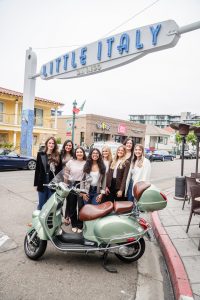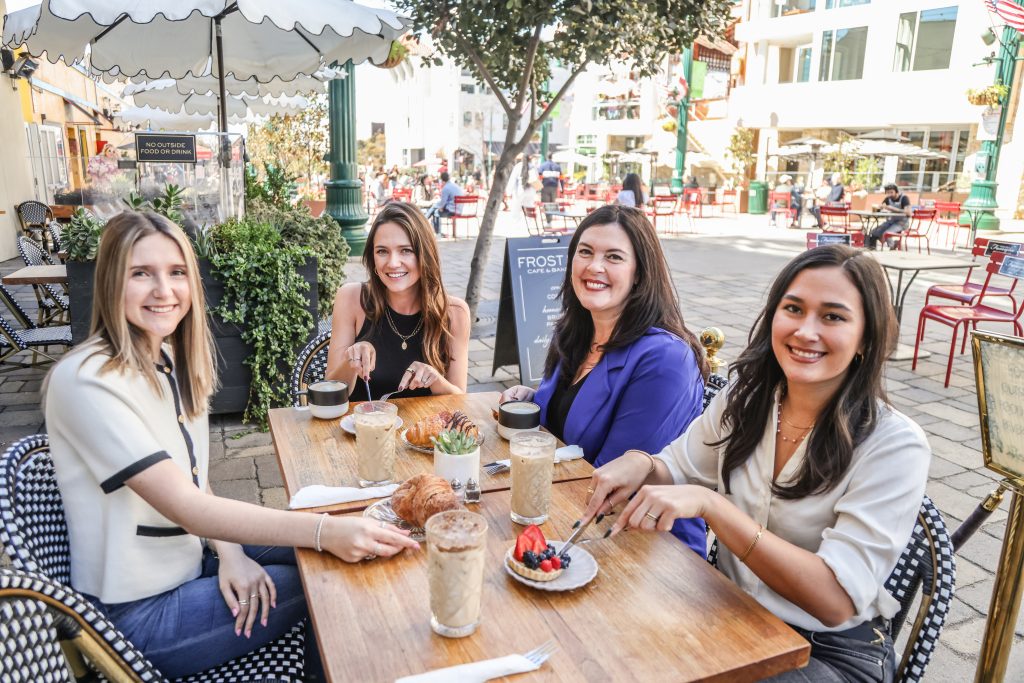Written by Jennifer von Stauffenberg
This month marks 12 years since we started working with the Little Italy Association. We know the power of public relations for a neighborhood, and we have crafted strategies that have proven effective in over 17 communities nationwide. The key? Have a clearly defined vision. With each of the campaigns we have had the pleasure of leading, there is one thing that is consistently true… no two communities are the same.
Our job as an agency is to illuminate the greatness that already exists while simultaneously developing new creative ways to build connection in community. With a powerful neighborhood campaign, the rising tide truly lifts all boats, and we know that when things are done right, everyone can thrive. It has become our favorite way to support small businesses.
So, you might be thinking, why is public relations such an effective tool for promoting and marketing neighborhoods? The answer is simple… public relations is about building relationships, and relationships are the cornerstone of every community. Our job is to amplify the things that make people love their neighborhoods and communities. We work day in and day out on ways to create deeper connection between the overall community and the people who either live, work, or play there.
Every campaign at Olive starts the same way – we work with each neighborhood to identify the vision. Neighborhood campaigns sometimes involve quantitative KPIs like ticket sales or fundraising targets, but the majority of the goals are qualitative. It’s our job to work closely with clients to identify first what they want to see and second how we will know we have achieved those goals.
Rewinding to 2013 when we launched the campaign with Little Italy, the goal was not to pack the events or streets with visitors, it was much more specific than that. Marco LiMandri wanted us to create a campaign that would invite women and children to the community. He felt that we would know we had been successful when women felt safe and invited to walk the streets of the community with their babies in strollers. I personally loved this goal because that year, on my fifth year of living in Little Italy, I was nine months pregnant with my first son. I can still remember the first meeting. I was so worried that working with Little Italy might ruin my obsession with the neighborhood that I called home. Sort of like Disneyland with the lights on…
The first meeting was beyond my wildest expectations. One of the board members had written a letter about why the piazza should be named Piazza Della Famiglia. The community’s dedication to welcoming families moved me to tears and it has been a love story ever since.
After we understood the vision, we had to build a strategy to make it happen. While Little Italy’s vision was clear, they aren’t always specific. Sometimes goals are to get more people frequenting a community to do more shopping or dining. Perhaps the goal is to support the community in thriving so more restaurants move in, introduce a new generation, or launch a new farmer’s market. Whatever the goal is, the main thing is to have one.
Once you know what you are trying to achieve, you can next look at who the target audience is and how to reach them. This is one of the most common areas where people make mistakes. For example, many assume that social media is the solution to everything. In reality, technology isn’t about casting a wider net, it’s about reaching the right audience with precision. The way you engage locals will differ from how you connect with people in the greater region, and both will differ from how you reach visitors. The same applies to age groups: you can’t communicate with 20-somethings the same way you would with 40-somethings, because they consume information in entirely different ways.
In the past when we had just a few options to reach people, this was much simpler, but technology helps us to develop incredible filters to give us control of what we want to see. While this is awesome as a consumer, it can pose as an expensive challenge to businesses and organizations depending on how you approach it.
For this reason, you need to get specific when you build your list of target audiences. Once you identify your target audience that will support you in achieving your goals, you must then outline how you will reach them. For example, will you use media relations, events, social media, promotions, direct outreach, email marketing, advertising, text messaging, partnerships, or… the list goes on and on with possibilities.
So, let’s recap:
Step 1: Identify your goal
Step 2: Identify the target audience you must connect with to achieve your goal
Step 3: List how you can realistically reach your target audience
Once you have completed those steps, you must identify all the things that are already in place that will require promotion.
For example, most communities have holiday events, annual events, farmer’s markets and other legacy activations that are in place.
Once you have outlined all those parts, you can begin to place them in a calendar and identify the timeline for promotions. This is where we shine. At Olive, we work with our clients to lock in all these details to ensure the community knows what’s going on. Our job is to amplify and illuminate all the details to ensure the community knows what is happening and they know exactly how to engage. When a campaign is successful, there is no need to question whether or not it’s working. At Olive, we know that public relations is a powerful tool to engage the community because we have seen it work so many times. A thriving community means thriving businesses, happy and engaged community members and growth year over year.
If you work with a neighborhood ready to take things to the next level, we would be happy to connect with you.



